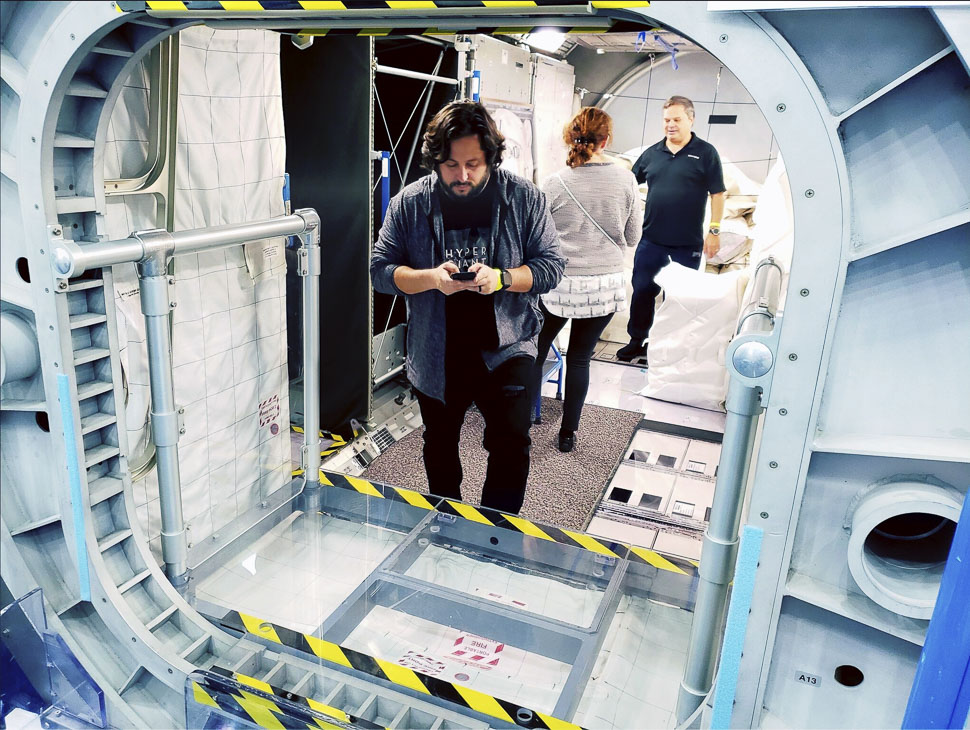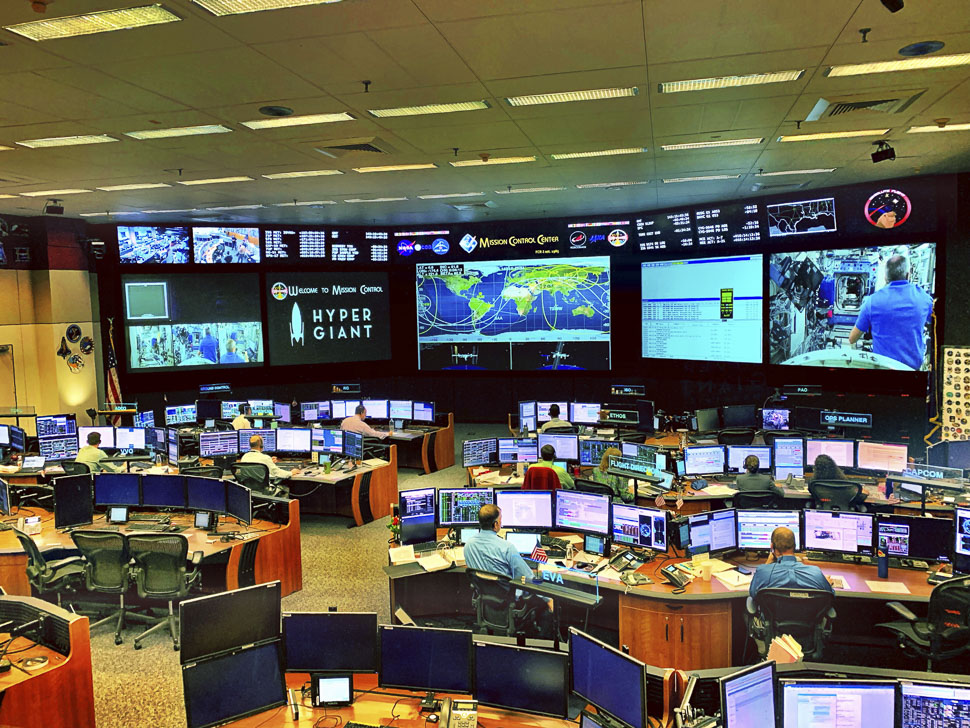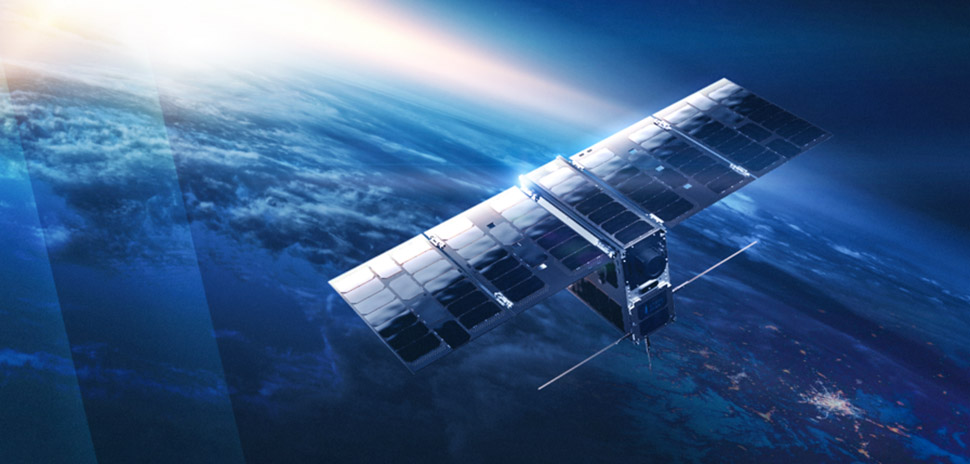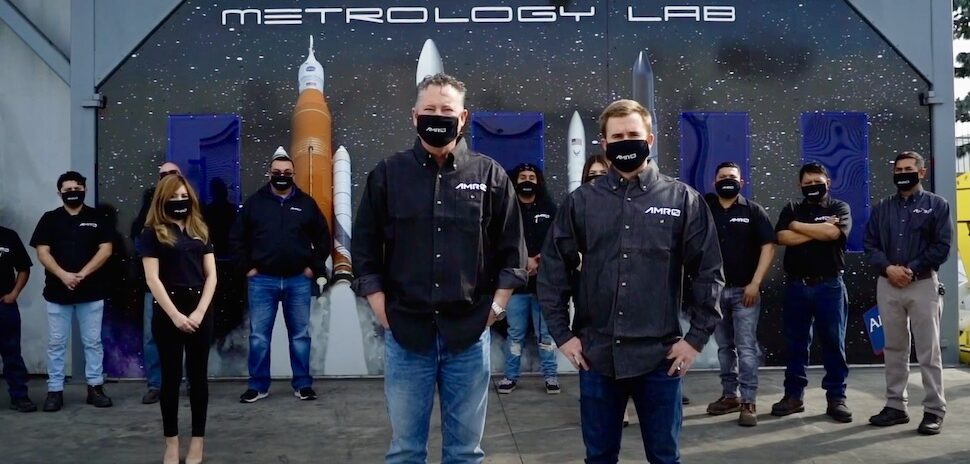Texas-based Hypergiant Industries is launching a satellite that can update, collect, and share data in space—on the fly.
The company today announced the first node in a planned multi-satellite fleet called Chameleon Constellation, which was developed in partnership with the United States Air Force (USAF). The new satellites can push code “in minutes, faster than updates from ground stations,” according to Hypergiant CEO and cofounder Ben Lamm.
Hypergiant, a 230-person startup with headquarters in Dallas and Austin, plans to launch the first updatable, adaptable satellite early next year. Based on its success, the company intends to roll out the rest of the “constellation” over the next two years.
Described as a fleet of mini-satellites that work together, it’s a first-of-its-kind implementation, says Lamm.
Hypergiant Industries, which creates emerging AI-driven technologies and says it develops solutions for the “world’s most challenging problems,” emerged out of stealth in late 2018.
The company is poised to hit $100 million in revenue in 2020, pandemic or no, says serial entrepreneur Lamm. That puts it “on track to be one of the fastest AI companies to $100M in revenue.” As the parent corporation over “a roster of divisions,” Hypergiant serves verticals that include space science and exploration, satellite communications, aviation, defense, healthcare, transportation and municipal infrastructure, and more.
![Hypergiant CEO Ben Lamm (second from left) with members of the team. [Photo: Courtesy of Hypergiant]](https://s24806.pcdn.co/wp-content/uploads/2020/06/Ben_Lamm_2-1_97001courtesy.jpg)
From left, Hypergiant team members Greg Carley, Ben Lamm, Dan Haab, Sarah Grant, and Shawn Ullman. [Photo: Courtesy of Hypergiant]
United States Air Force X Hypergiant
Hypergiant says its partnership with the USAF will ensure that the Air Force has superior technical advantages in space.
A “reconfigurable fleet”—meaning one with the ability to update the satellites’ functionality and mission profiles on the fly, based on real-time emergent scenarios and information—will be a “tremendous advantage to today’s warfighters,” notes Hypergiant advisor Lance Lord, a retired four-star Air Force general with 37 years of military service.
Speed to launch is also part of the equation, Lamm says.
“Traditional satellite systems need years to build because the hardware and software both need to be complete before they can launch,” Lamm said in a statement. “But that’s not fast enough anymore. We, in collaboration with the United States Air Force, are designing, building, and launching a system that is reconfigurable and can be updated in real time.”
The satellite system, which can change its function from the ground, based on need, has “a multitude of use-case scenarios in both war and peacetime space situational awareness,” Lamm says.
For example, the ability to update satellites in real time to protect against new cybersecurity threats will be a key use case in protecting satellites, Lamm told Dallas Innovates. The ability of the satellite fleet to work together to process data—without sending it back to the ground “where it risks interception can help our warfighters,” he says.
The satellites’ distributed computing power also opens up possible use cases beyond the military, the futurist entrepreneur notes.
For example, a constellation of satellites can work together to run machine-learning models in space on space-derived data proved by other satellites to the constellation, he says. The constellation also could be “real-time retasked for imaging or communications.”
That ability to “leverage distributed computing in space for satellite-to-satellite machine learning and re-configure their actions or tasks based on a mission need is the next evolution of all space-based assets,” Lamm says.
“The only difference between a national security system and space junk is the software that operates it.”
Alongside the USAF’s Space Camp Software Factory, Hypergiant is developing the software in conjunction with Platform One, the USAF and DoD’s accredited “containerized” system that allows for development in a secure environment that meets all requirements by the DoD, Lamm says.
“We need to be able to put assets in space as quickly as possible and then continuously improve them to maintain superiority,” said Director of the Department of Defense’s Platform One USAF Major Rob Slaughter.
To stay competitive and protect the systems that run the lives of everyday Americans, “we created a solution that allows for continuous software delivery in space,” Slaughter says.
He adds: “The only difference between a national security system and space junk is the software that operates it.”
For Hypergiant, that satellite development is end to end.
In addition to the software, the company also designs, builds, deploys, and operates the satellites through the company’s constellation-as-a-service offering (CaaS) and its H.I.V.E platform.
H.I.V.E, which stands for “hyper-intelligent vehicle enhancement,” lets operators “not just manage three to five satellites from a network operations center, but to be able to manage 150 satellites from an iPad on a boat, using AI in smart automated systems,” Lamm explains.

CEO Ben Lamm at the NASA Johnson Space Center.
Updates can happen in “minutes, not months”
Lamm describes Chameleon Constellation as a completely agile software platform for on-orbit assets—meaning in space and in an orbit so that the satellites and their software are operating in space.
Agility is important, Lamm explains. Rather than just one or two big software pushes a year, the company can do “constant iterative updates in minutes instead of months.”
In Hypergiant’s own words, the system allows for:
● Responding to emergent and dynamic situations in space with the ability to change sensor array functionality and communication protocols
● Modifying artificial intelligence and machine learning protocols and directives based on space-derived data
● Updating mission-critical systems using modern software development practices on secure orbital assets
● Delivering applications rapidly and in a secure manner to space, increasing warfighter’s competitive advantage in near real-time without the need to launch additional satellites
● Allowing rapid threat prevention through continuous updating of cybersecurity software and protocols
● Migrating legacy systems with new applications and functions to increase the longevity and usefulness of space assets
The system can benefit those who want to put up a satellite quickly, but also need to update it to meet evolving security conditions and mission requirements, Hypergiant says.
The Constellation’s flexibility and intelligent function that allows for transformation on the fly also provides value and durability “that far exceeds traditional static satellite configurations,” it says.
Although not directly related to the Chameleon Constellation, Hypergiant has already completed four other deployed missions (NG10, NG11, NG12, and NG13), the company said. It’s had a “100 percent mission success rate” and has worked with a big-name roster of commercial and government clients, including NASA, Army Space, DARPA, Lynk, Dynetics, and Amazon Web Services.
Looking ahead, Lamm says the company will continue to focus on AI-powered satellites, operating them with its proprietary next-gen “intelligent ground control system.” The company also will use the space-derived data it gathers for critical decision support.
Lamm says the COVID-19 pandemic has not changed “any of our outlooks or forecasts for 2020.”
He says with the company’s focus is on critical infrastructure, space, and defense. “90 percent of the work we do is software, so the [pandemic hasn’t] severely impacted or changed our outlook. Certain sectors of our business have had slowdowns while others have accelerated,” according to Lamm.
He admits launches and other components of the company’s constellation as a service platform have been challenging during the pandemic, and notes some impact in certain sectors of its business such as oil and gas software.
But it’s also turned up other opportunities. Lamm sees an enthusiasm for its growing H.I.V.E. satellite-monitoring and operations platform.
“While COVID has caused certain challenges with that business from a manufacturing perspective, it created an insane urgency and excitement for our platform,” Lamm said in an email to Dallas Innovates. “We’ve had an influx of people because different government facilities have had limited capacity. If they can’t put all of their people in shifts in command centers, and they need to start having people do it from home, what does that look like?”
That has implications, not just for this pandemic, but potentially the next, he says.

Mission Control at NASA Johnson Space Center welcomes the Hypergiant team for a test and demo.
Collaboration with the United States Air Force
Hypergiant, characterized as being on a fast-track since launch, has been working on the Chameleon Constellation with the USAF since the beginning of the year, Lamm says. “We began designing and architecting this constellation in Q3 of 2019.”
The company was collaborating with the USAF on several initiatives and proposed the capability to them in January of 2020, he says, adding, “They were excited about the applications of this.”
Lauren Knausenberger, Chief Transformation Officer of the USAF, confirmed the Air Force is working with Hypergiant on a number of projects. She praised the team’s “passion for solving incredibly complex problems.”
That’s important because “the USAF understands that the future of keeping Americans safe rests in having access to the best minds and most sophisticated technology,” Knausenberger said.
“Hypergiant has the incredible ability to look towards the future and see where companies and industries need to go. They ‘get’ problems intuitively and then apply sophisticated research and development to test those solutions.”
In addition to the USAF, Hypergiant works closely with several large government technology partners and large defense contractors, Lamm says.
“In some cases, we are going against them on deals, and in others, we are teaming with them as partners,” he says.
Hypergiant’s sole focus is problems involving critical infrastructure, space, and defense, Lamm says. “These are sectors we refer to as the ‘elements of civilization’ which we believe are all fundamental in establishing society and pushing it forward.”
The company sets itself apart with its ability to offer software solutions, hardware, proprietary software platforms, as well as advanced R&D, Lamm says, adding that gives “us an edge when working on problems in these sectors and sets us apart from other defense contractors or technology companies.”
![Ben Lamm with members of the Hypergiant team. [Photo: John Davidson]](https://s24806.pcdn.co/wp-content/uploads/2020/06/Hypergiant-group-970.jpg)
From left: Hypergiant CEO Ben Lamm (front row) with Sarah Grant, Dan Haab, Greg Carley, and Shawn Ullman. [Photo: John Davidson]
“The new space race is here”
The space sector is becoming more important than ever, according to Lamm. That means it poses an opportunity for innovators that goes beyond legacy defense partners and governments, thanks to a lowered cost of launches and additional privatization and commercialization.
“The new space race is here,” Lamm says. “It’s being driven by both innovations in hardware and software. The industry is at a transition point shifting from a predominantly hardware industry to one that is being advanced and innovated through software.”
Lamm’s love of space and its potential is evident.
“The perspective from space affords us the ability to look back at earth and leverage various sensors for everything from weather to climate change to defense to communication and more,” Lamm says.
Bill Nye, “everyone’s favorite Science Guy,” is another Hypergiant advisor whom Lamm also calls a friend. Nye loves to say, “Space brings out the best in us,” Lamm noted in The Hour.
He points to opportunities for software and hardware tech businesses, but said in the publication it goes well beyond that. Lamm lists “food in space, trash removal in space, fabrics for space, medicine designed in space, tourism in space, and more” as examples. He encourages entrepreneurs to “just join the market and you’ll find sub-categories that are just opening up.”
![]()
Get on the list.
Dallas Innovates, every day.
Sign up to keep your eye on what’s new and next in Dallas-Fort Worth, every day.


































































